The domestic academic community recently proposed a new generation of star-shaped decentralized solar system architecture, by grouping solar cell module arrays, and each group is controlled by a central maximum power point tracking (MPPT) controller to extract power information to overcome dark clouds or The shading effect causes the uneven power generation of individual batteries to improve the overall system power generation efficiency.
In order to improve the efficiency of solar power generation, the general practice is to improve the power generation efficiency and improve the process from the solar cell manufacturing side, or to save material consumption to reduce costs. The Modular Power Management System (MLPM) is used in the back-end applications of solar power generation to improve the power generation efficiency of the module by switching power supply (SMPS) technology. Compared with the traditional modular tandem-type centralized solar power generation architecture, the distributed solar power generation system developed by MLPM can increase the power generation efficiency by about 25% under different cloud or building shielding conditions, which is quite suitable. It is necessary to install solar panels in small and medium-sized residential applications in different orientations. Therefore, more and more solar power systems have begun to use micro-inverters or power optics (Power OpTImizer) to improve power generation efficiency.
MLPM ignition micro-inverter / power optimizer demand rose
The research report of IHS iSuppli, a foreign market research organization, pointed out that the global MLPM market is growing rapidly, and it is estimated that it will reach 6.2GW installations in 2014, accounting for 38% of the global residential solar installations. The MLPM includes DC-AC's micro-inverter and DC-DC power optimizer, although it will add additional solar system installation costs, but according to Moore's Law, the average sales price of the micro-inverter The forecast is expected to fall from $0.88 per watt in 2010 to $0.29 in 2014; the power optimizer is expected to fall from $0.18 per watt in 2010 to $0.08 in 2014.
Although the micro-inverter developed earlier, the safety requirements of solar inverters are required to be isolated from the power grid circuit, so the circuit cost is high. In 2009, Solaredge was established in Israel and launched a series of related products for residential decentralized solar power generation, from the power optimizer of individual solar modules, the inverter that converts the final total output power to the AC grid, and even It is a real-time monitoring and remote database for solar power generation, and a series of products have been launched (Figure 1). In addition, TIgo in the United States and Solarmagic under the former National Semiconductor also have their own power optimizer products. Decentralized solar power optimizers have great potential for development in the future.

Figure 1 SolarEdge's distributed solar power generation solution
Detectable fault/remote monitoring star-shaped decentralized system
Since the power generation characteristics of the solar cell vary with the ambient illuminance and the backplane temperature, in general, the output is transmitted through a DC-DC converter to modulate the output characteristics of the solar cell. It must also be paired with Maximum Power Point Tracking (MPPT) technology to ensure maximum solar power output efficiency. In addition, depending on the application of the output of the solar power system, it can be divided into two types of stand-alone (Stand-Alone) and Grid-Connected solar power generation systems.
Traditionally, the solar module array after series and parallel connection is regarded as a single module for MPPT, which is called Centralized Photovoltaic System (Fig. 2). However, the premise is to ensure that each piece of the solar module array has the same characteristics, if it is mixed with degraded solar modules, such as dark clouds, shades, dust, solar cells aging, or solar module installation sunshine The difference in orientation will result in a partial shadowing effect (ParTIal Shading Effect), which in turn will result in a significant reduction in overall power generation efficiency and, in severe cases, even an overall 25% power generation efficiency.
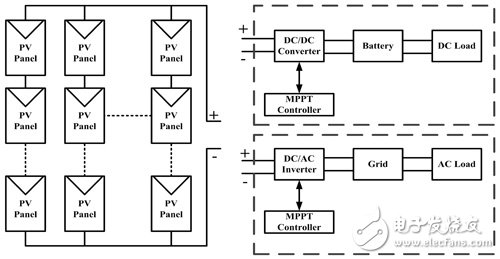
Figure 2 Centralized solar power system
In order to solve the lack of centralized solar power generation system, some scholars began to propose the architecture of the distributed photovoltaic system (Fig. 3) in the later research, that is, install a set of DCs at each output of the solar module. DC Converter and MPPT controller. Thus, even if the solar module array is partially affected by the shadowing effect, each solar module in the array can be self-modulated to the maximum power output to maintain the overall power generation efficiency.
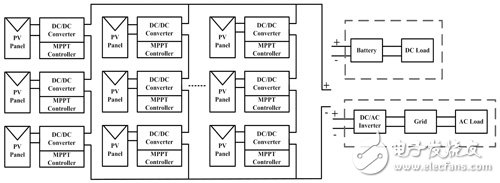
Figure 3 Decentralized solar power system
Compared with the traditional foreign manufacturers to install independent MPPT controllers for individual solar modules, a star-shaped decentralized solar power system (Figure 4) proposed by the University of Success, grouping solar arrays, each group with a central The MPPT controller extracts the voltage and current information of each solar cell, and then performs the MPPT operation to output a control signal to each solar module, and the central MPPT controllers of each group can also communicate with each other. The advantage of this approach is to replace the individual MPPT controllers of each module with a high-performance central MPPT controller, while the central MPPT controller can detect MPTP while acquiring the power generation information of each module. In addition to module failures in the array, power generation information can also be stored and sent to the network for remote monitoring.
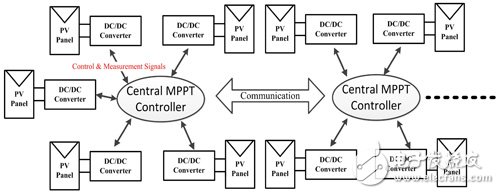
Figure 4 Schematic diagram of a star-shaped distributed solar power system
The MPPT algorithm used in the star-shaped solar distributed power generation system is the quadratic extreme value method developed by the large laboratory. The reason is to approximate the solar characteristic curve to the quadratic curve, which will be in the tracking process. Three operating points D1, D2 and D3 are defined, and the output powers P1, P2 and P3 of the three operating points are measured. When P2 is greater than P1 and P3, the possible maximum power point can be directly calculated by using the quadratic extremum equation. Location (Figure 5). Compared with the traditional Perturb and Observe (P&O), the tracking speed of the MPPT can be improved, and it will not oscillate near the maximum power point after convergence.
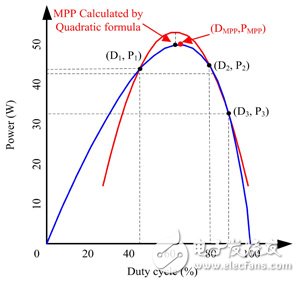
Figure 5 Schematic diagram of the quadratic extreme MPPT algorithm
[@B]Power Optimizer Circuit Design Aspects [@C] Power Optimizer Circuit Design Aspects
The power optimizer selects the Buck-Boost Converter circuit topology (Figure 6) that can be used for both buck-boost functions. In addition to the simple circuit structure, it can also be flexibly applied in various applications. Inductance must be considered in terms of flow resistance to avoid leakage due to saturation current. Metal oxide semiconductor field effect transistors (MOSFETs) must also consider equivalent internal resistance to minimize conduction loss. Additional parallel Schottky The diode (Schottky Diode) selects a lower withstand voltage MOSFET and reduces switching losses.
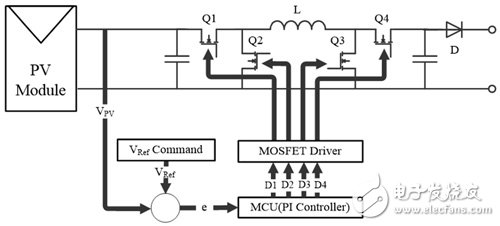
Figure 6 Buck-Boost Converter circuit architecture of the power optimizer
Designed with an isolated MOSFET driver at the beginning of development, the advantage is that control and measurement are simple, but the extra isolated power supply will significantly increase the cost of the circuit. Therefore, after the technology is mature, the half-bridge or full-bridge driver IC with built-in bootstrap power supply circuit is used to drive the high- and low-side MOSFETs simultaneously, although the latching of the MOSFET must be prevented on the driver (Latch Up The effect, but in line with the cost of the circuit is more in line with market demand. The actual power optimizer for 230 watt solar panels can achieve 96% conversion efficiency around the maximum power point.
In the distributed solar power series, each power optimizer affects the individual outputs when using the pulse width modulation (PWM) signal for voltage modulation, so the PI regulator design in the power optimizer The quality is very important. Before the actual test, the SPICE (Simulation program with Integrated Circuit Emphasis) model of the solar module can be built in the circuit simulation software of National Instrument (NI) MulTIsim (Fig. 7), and the circuit for the power optimizer can be built. mold. Compared to other circuit simulation software, the advantage of using Multisim is that it can directly simulate and test PI regulator parameters and MPPT algorithms in LabVIEW through the Co-Simulation interface with LabVIEW. Figure 8 shows the comparison between the power optimizer voltage simulation results and the actual test results. The trend is quite close.
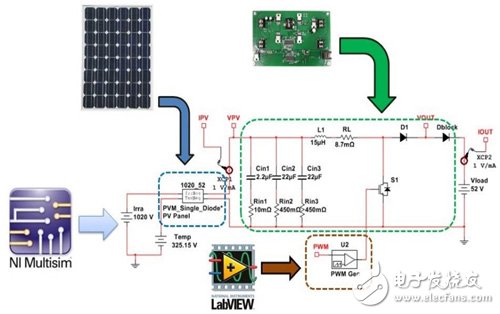
Figure 7 Power Simulator Circuit Simulation in NI Multisim
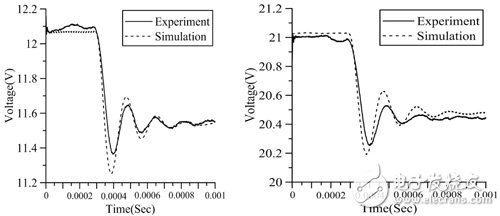
Figure 8 Comparison of power optimizer voltage regulator simulation and measured results
Power optimizer boosts the performance of star-shaped distributed systems
Figure 9 is a schematic diagram of a star-shaped distributed solar power system. Each solar module in the solar power series is connected to the inverter after being installed with a power optimizer. In the power optimizer, there is a low-cost digital signal processor (DSP) that modulates the PWM control signal and extracts the voltage and current information of the input and output, in addition to the control of the PI regulator. Data can be transferred to the central MPPT controller via the Universal Asynchronous Receiver Transmitter (UART).

Figure 9 Schematic diagram of a star-shaped distributed solar power system
The central MPPT controller uses the NI sbRIO-9606 embedded controller, which has two embedded control cores. The field programmable gate array (FPGA) can parallelize and process the UART communication of each power optimizer. The processor immediately performs decentralized MPPT operations and passes control parameters to each power optimizer. Through the Ethernet interface of the NI sbRIO-9606, the power generation information of the entire system can be directly released to the network for remote monitoring.
In order to test whether the power optimizer can exert its function under the condition of partial shielding, the experiment uses eight pieces of Maoxin 230 watt solar panels to be output in series in a star-shaped distributed power generation structure, and is converted into alternating current into the city grid through the inverter. In the middle of the road (Figure 10). The experiment started at 9:00 in the morning and produced partial shading on the seventh solar module at 12 noon to reduce power.
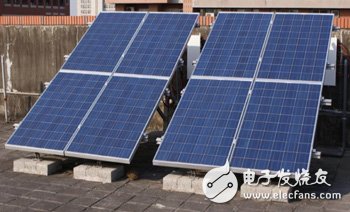
Figure 10 Experimental test of eight Maoxin 230 watt solar modules
From the experimental results in Figure 11, although the specifications of the eight solar modules are the same, the actual output power is still slightly different, especially when the seventh solar module is shaded, so that the power does not match the other modules. The power optimizer can still maintain the maximum power output of each slice without being affected by partial shadowing effects.
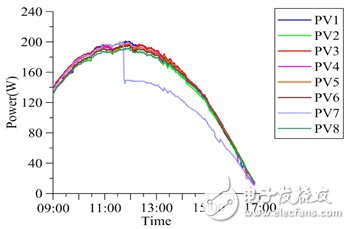
Figure 11 Decentralized solar power generation test results
Eliminate sunshine/module mismatched star-shaped decentralized system
As oil prices remain high and electricity prices rise, solar power generation will reduce its power generation costs due to modularization and mass production. The goal of reaching market-level prices is no longer a dream. In the future, solar energy will gradually appear in the life circle of small and medium-sized power generation and building integration (BIPV), such as family houses, commercial buildings, public facilities and so on. However, in the past, centralized solar power generation was adopted to limit the flexibility of solar panel installation. The solar modules must be oriented in the same sunshine direction to avoid unnecessary power loss caused by the shadowing effect. If the novel decentralized solar power generation technology is adopted, the loss due to different sunshine directions or mismatch between modules can be solved.
For example, the successful university low-carbon campus team is currently planning a solar power system with innovative curved solar parking sheds (Figure 12), using high-efficiency solar monocrystalline silicon modules, applying novel decentralized solar photovoltaic technology combined with green architectural design techniques. It can solve the power loss of solar module mismatch between solar modules and improve the efficiency of solar power generation, so as to balance the balance between technology and art design. In addition, through the modular system concept, the manufacturing and maintenance costs are reduced, and the resulting power supply charging station equipment, night lighting, and surrounding public facilities are used to meet the urgent need for a large number of urban charging stations and battery exchange stations.

Figure 12 Decentralized solar energy charging station
Leveraged star-shaped decentralized system, solar installation rate accelerates growth
In this study, the star-shaped decentralized solar power system can be completed from the solar system simulation, circuit design and production, data acquisition and MPPT control, to the network monitoring interface, all of which can be completed under the software and hardware architecture of the US National Instruments. The entire development process fully exploits the advantages of the LabVIEW graphical language. Especially with the NI sbRIO-9642XT as the central controller, the graphical programming language saves a lot of embedded development time.
In addition, through the parallel experiment of the mains, it is also verified that the self-developed new decentralized solar power generation technology can solve the mismatched power loss caused by the shadowing effect, module deterioration, dust and leaves. This technology will facilitate the combination of solar energy and environmental art to overturn the old impression of solar power generation, and promote decentralized solar power generation technology with more aesthetic architectural design, and the related patent technology is currently being applied for. In the future, this mature star-shaped decentralized solar MPPT technology can be transferred through technology to increase the utilization rate and installation rate of solar energy and reduce the dependence on petroleum fuel and nuclear energy.
Driverless LED High Bay Light
Driverless Led High Bay Light,Led High Bay Light Fixture,Led High Bay Lighting,Aluminum Led High Bay Light
Shenzhen Ri Yue Guang Hua Technology Co., Ltd. , https://www.ledlightinside.com
